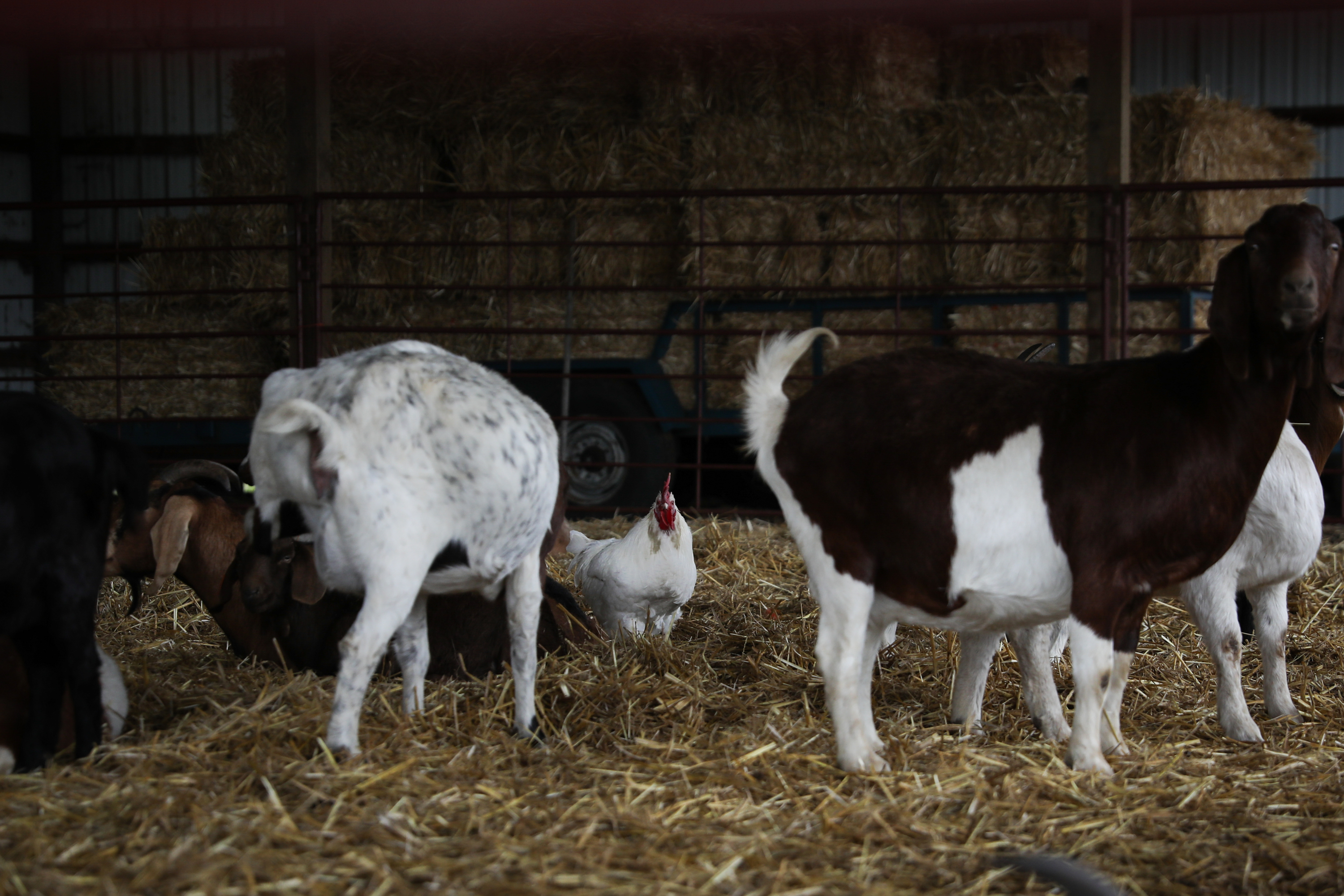
File photo from Dec. 9, 2022. The Umatilla County Board of Commissioners will vote on proposal changes this June. These changes would allow residential properties to have more more small livestock per acre and would restrict the number of fowl on properties.
Bradley W. Parks / OPB
In a 5-3 vote, the Umatilla County Planning Commission has recommended changes on the number of livestock residents can have. Under the proposed rules, single family dwellings are now allowed to have four small livestock animals per acre of property. In a 7-1 vote, the commission also decided not to recommend proposed changes that would limit the number of fowl on a property. Both recommendations will now go to the county’s board of commissioners who will vote on the proposed changes at a June 5 meeting. Berit Thorson is a reporter for the East Oregonian covering this issue. She joins us to share more on the proposals and the community feedback the changes have received so far.
Note: The following transcript was created by a computer and edited by a volunteer.
Dave Miller: This is Think Out Loud on OPB. I’m Dave Miller. It turns out chicks and ducks and geese do not need to scurry. Members of the Umatilla County Planning Commission said last week that there shouldn’t be tighter restrictions on chickens and rabbits on rural residential property. In fact, they went in the opposite direction and recommended that people should be able to have more small livestock, like sheep and goats, than were allowed in the past. But the contentious debate over this issue has brought up bigger questions about rural life and county regulations. Berit Thorson has been covering this issue for the East Oregonian and she joins us now. Welcome back to the show.
Berit Thorson: Thanks.
Miller: What prompted the Umatilla County Commission to take up changes to the number of chickens and rabbits and goats that folks can have in unincorporated areas?
Thorson: The initial impetus for this was complaints from residents around the county about noise that they couldn’t do anything about, coming from roosters. Representatives with the county’s planning division said that they got multiple complaints straight to the county commissioners, and the commissioners in turn asked the planning division to take a look at what could be done. There were also concerns about cock fighting. And so when the planning division went to go and check into what the code says now and how it could be changed, they decided to do a deeper dive into the whole code, because it has been around since 1972 without changing.
Miller: Can you explain the two main rule changes that the planning commission was considering?
Thorson: Yes. So the first was that they were considering increasing the maximum number of small livestock per acre, like sheep and goats, from two to four. And that was a code that most people didn’t even really know about. I mean, this whole code is. So there were a lot of people that kind of implied, without coming right out and saying, that they did not meet that limit already. But they saw this as a good thing, because it’s expanding the number of livestock that people could have on their farms and their rural residential properties.
And then the other main rule change was limiting poultry and small fur based animals like rabbits to 40 per lot. So regardless of the size of the lot, if it’s a single tax lot, they could only have up to 40, and only up to two roosters. Right now, there’s not a differentiation between roosters and other kinds of poultry.
Miller: There was a meeting last week to discuss these amendments. What was it like?
Thorson: It was well attended, which they said does not normally happen. I think there are about 100 people there. And it definitely was intense. People seemed frustrated. It did stay, for the most part, respectful of everyone involved. It was long, it lasted about four hours I think. About 26 community members spoke, and 24 of them were in opposition to any changes, some of them even speaking out against the code itself. So it definitely got emotional. And people were talking about the impacts that this would have on their livelihood and the way that they live their lives.
Miller: One of the points that some attendees made was that if noise was one of the big problems to begin with, the county should just focus on that specifically. How did the planning division manager respond?
Thorson: Yes, that was a big concern and a big point that people talked about. The planning division manager basically said if there’s nothing in the code about it, there’s no way to enforce it. This code specifically is a land use code, so it has nothing to do with noise. The idea was if they could change the way that the land use code worked and limit the number of animals, that would limit the noise. So the separate noise ordinance as well, county council said it couldn’t be used because that noise ordinance does not include agricultural uses. So if noise is the problem, as was discussed, there really isn’t anything that the county can do about that specifically without it being in the code. And so the planning division manager was just basically trying to say it’s not in the code, so we can’t do anything about it, and it needs to be in the code if we want to do anything about it. So to even respond to it, it needs to be in the code first.
Miller: In the end, the planning commission voted to recommend that county leaders let people have more small livestock like goats and sheep, but they didn’t want county commissioners to tighten restrictions on roosters and chickens and rabbits. What was their reasoning?
Thorson: Their reasoning was expanding the number of small livestock seemed like a good thing. Even if people didn’t know about the code already, this would allow them to be more compliant, potentially, with the code. And it seemed like a good thing to them. People generally seemed fairly neutral about that change. And the planning division was definitely in favor of that.
And the commission voted not to recommend limiting the chickens and roosters and rabbits, because that’s what they heard from the community. And I think that everyone who spoke was very much against it. The planning commission basically told the planning division – the commission is separate from the planning division, which is staff members of the county. The commission told the county staff that it would be great if there was a way to look into addressing this issue in a different way, as residents in the county in the rural areas are requesting. So because the people didn’t want enforcement in this way on poultry and rabbits, the planning commission voted to listen to them.
Miller: Berit, thanks very much.
Thorson: Thank you.
Miller: Berit Thorson is a reporter for the East Oregonian.
Contact “Think Out Loud®”
If you’d like to comment on any of the topics in this show or suggest a topic of your own, please get in touch with us on Facebook, send an email to thinkoutloud@opb.org, or you can leave a voicemail for us at 503-293-1983. The call-in phone number during the noon hour is 888-665-5865.

